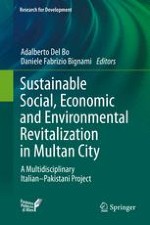This book describes six months of initial intensive activities within a motivating multidisciplinary project to achieve sustainable social, economic, and environmental revitalization in the historic core of Multan City, Pakistan. The project is managed by Fondazione Politecnico di Milano within the framework of the "Pakistan-Italian Debt for Development Swap Agreement” and has five components: a livelihood improvement program, a living conditions improvement program, revitalization of physical assets, establishment of a Pakistan-Italian resource centre in Multan, and an Italian collaboration program for training and capacity building. All aspects are covered in this book, which provides a comprehensive account of progress in this excellent example of cross-cultural cooperation between a Western and an Eastern country in regenerating an historic populated site.
